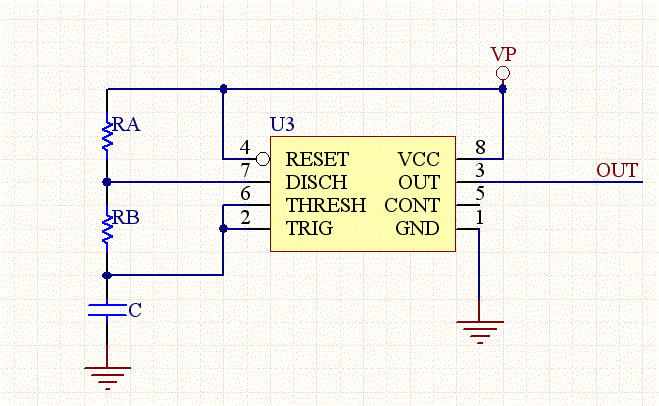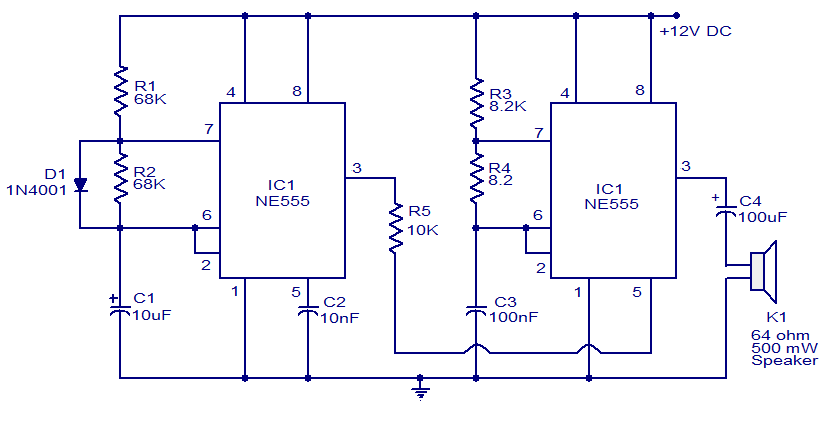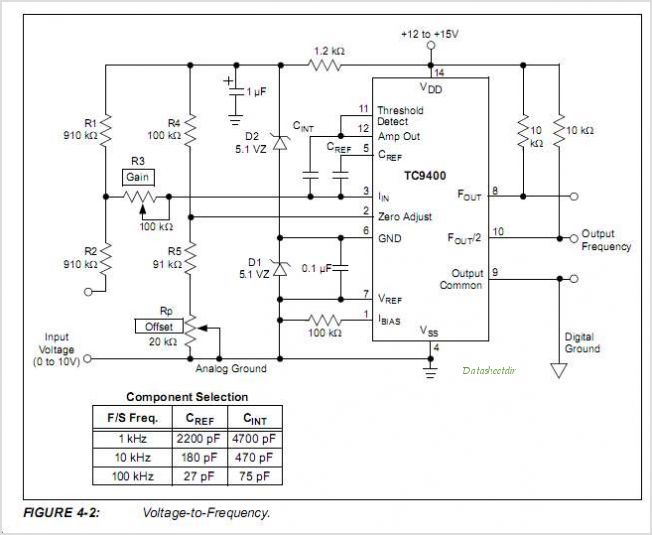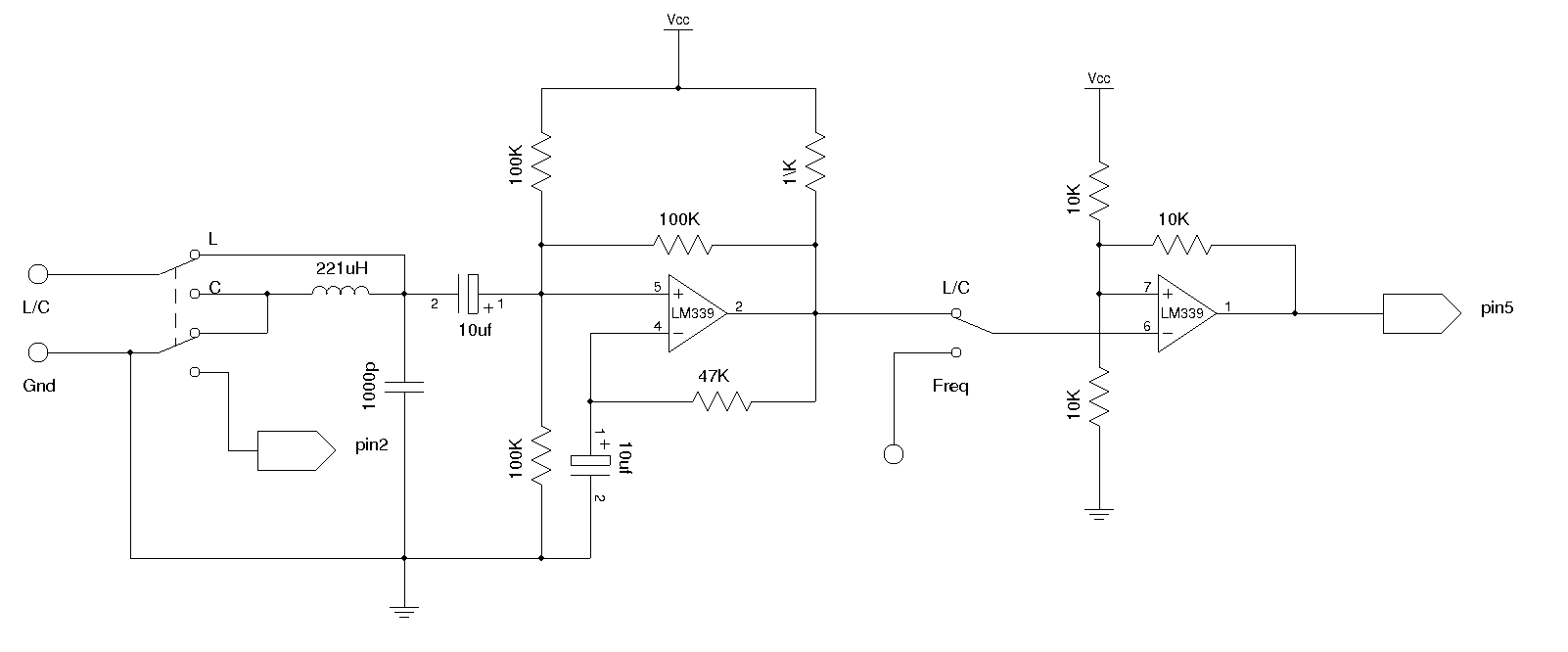
NE555 Astable Multivibrator Frequency and Duty Cycle Calculator

This calculator computes the resistor and capacitor values for a NE555 timer chip configured as an astable multivibrator (oscillator) or square wave generator. By entering the desired duty cycle and frequency, the calculator provides suitable values for the resistors and capacitors.
The NE555 timer is a versatile integrated circuit widely used in various applications, particularly in generating precise timing and oscillation. When configured as an astable multivibrator, the NE555 produces a continuous square wave output, making it ideal for applications such as clock pulses, tone generation, and LED flashing.
In the astable mode, the NE555 operates without any stable state, continuously switching between high and low output states. The frequency of oscillation and the duty cycle are determined by two resistors (R1 and R2) and a capacitor (C1) connected to the timer's pins. The output frequency (f) can be calculated using the formula:
\[ f = \frac{1.44}{(R1 + 2R2) \cdot C1} \]
The duty cycle (D) is defined as the ratio of the time the output is high to the total period of the output signal. It can be calculated using the following equation:
\[ D = \frac{R2}{R1 + 2R2} \]
To utilize the calculator effectively, the user inputs the desired frequency and duty cycle. The calculator then uses these parameters to derive the values for R1, R2, and C1, ensuring that the output meets the specified requirements. This process involves iterative calculations, adjusting component values until the desired frequency and duty cycle are achieved.
It is essential to select standard resistor and capacitor values to ensure availability and practical implementation. Additionally, considerations for tolerances and temperature coefficients of components may influence the final design, particularly in precision applications. The NE555 timer's output can drive various loads directly or may require additional driver circuitry, depending on the application's power requirements.This calculator computes the resistors and capacitors for a NE555 timer chip, which has been configured as a astable multivibrator (oscillator), or square wave generator. Just enter in the duty cycle and the frequency and the calculator will compute reasonable values for the resistors and capacitors.
🔗 External reference
The NE555 timer is a versatile integrated circuit widely used in various applications, particularly in generating precise timing and oscillation. When configured as an astable multivibrator, the NE555 produces a continuous square wave output, making it ideal for applications such as clock pulses, tone generation, and LED flashing.
In the astable mode, the NE555 operates without any stable state, continuously switching between high and low output states. The frequency of oscillation and the duty cycle are determined by two resistors (R1 and R2) and a capacitor (C1) connected to the timer's pins. The output frequency (f) can be calculated using the formula:
\[ f = \frac{1.44}{(R1 + 2R2) \cdot C1} \]
The duty cycle (D) is defined as the ratio of the time the output is high to the total period of the output signal. It can be calculated using the following equation:
\[ D = \frac{R2}{R1 + 2R2} \]
To utilize the calculator effectively, the user inputs the desired frequency and duty cycle. The calculator then uses these parameters to derive the values for R1, R2, and C1, ensuring that the output meets the specified requirements. This process involves iterative calculations, adjusting component values until the desired frequency and duty cycle are achieved.
It is essential to select standard resistor and capacitor values to ensure availability and practical implementation. Additionally, considerations for tolerances and temperature coefficients of components may influence the final design, particularly in precision applications. The NE555 timer's output can drive various loads directly or may require additional driver circuitry, depending on the application's power requirements.This calculator computes the resistors and capacitors for a NE555 timer chip, which has been configured as a astable multivibrator (oscillator), or square wave generator. Just enter in the duty cycle and the frequency and the calculator will compute reasonable values for the resistors and capacitors.
🔗 External reference





